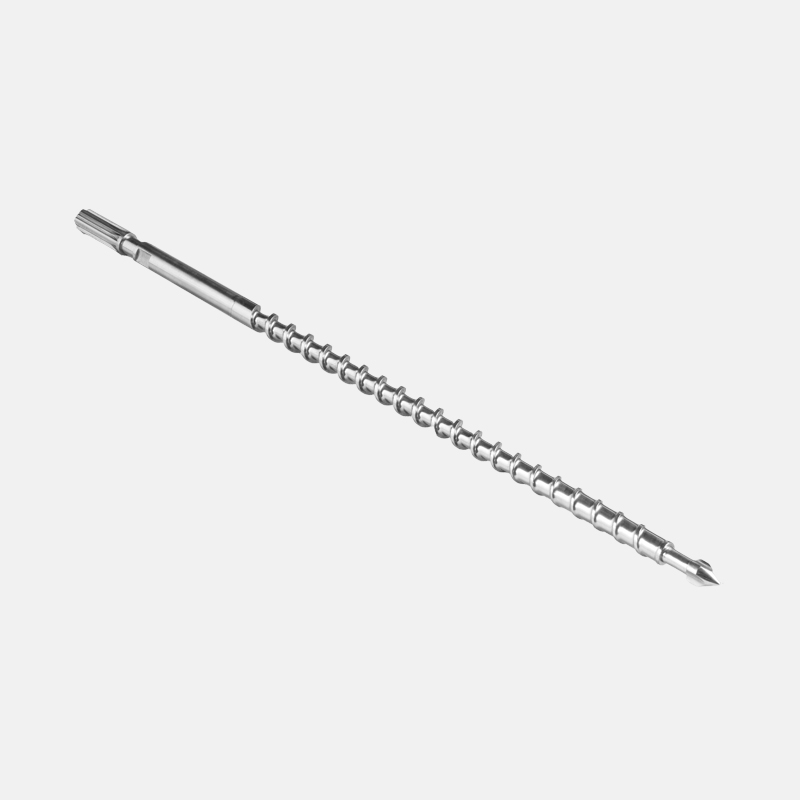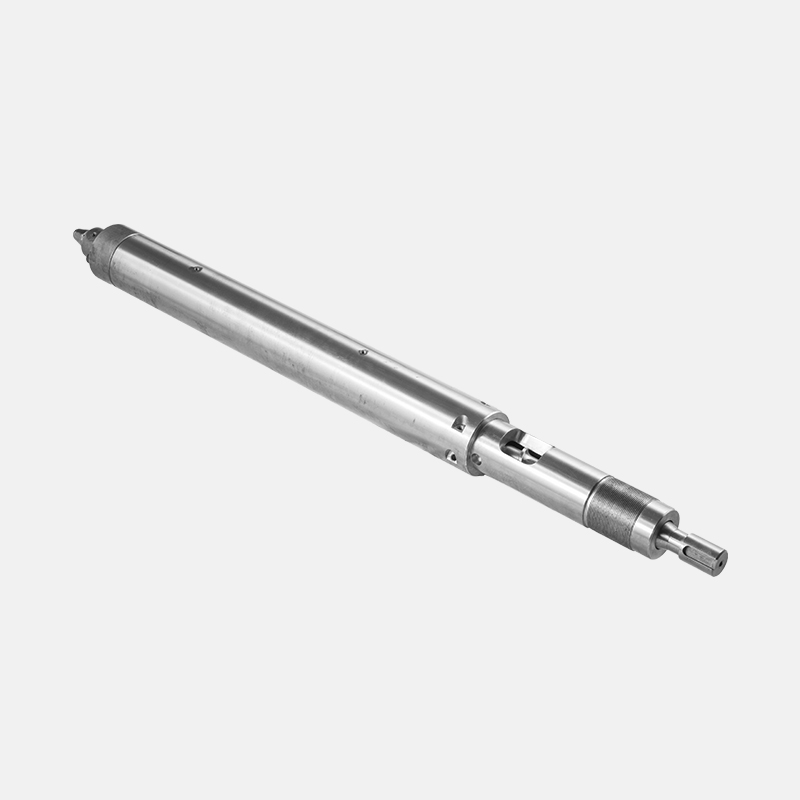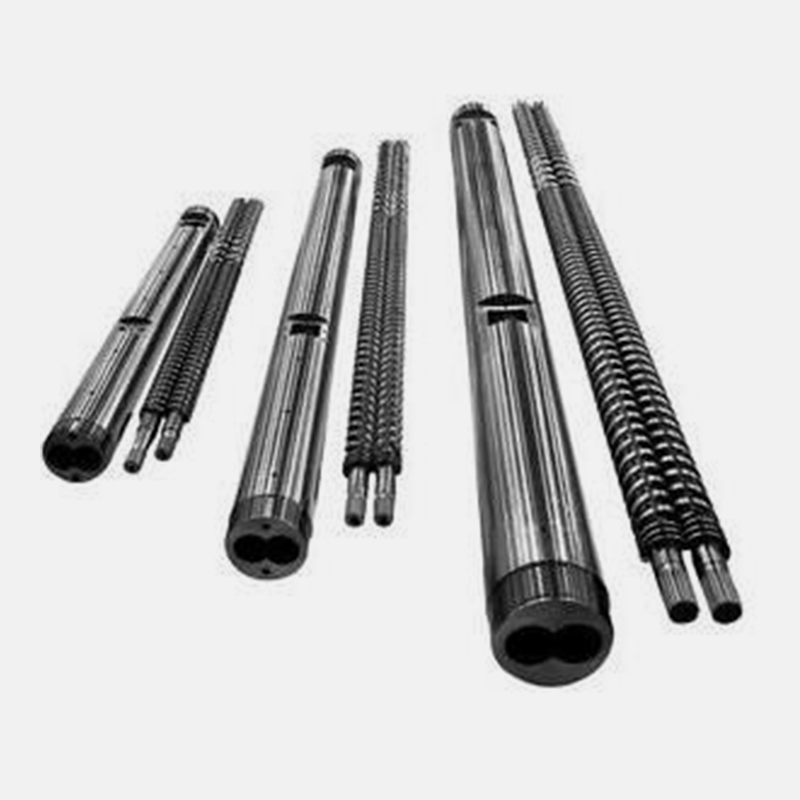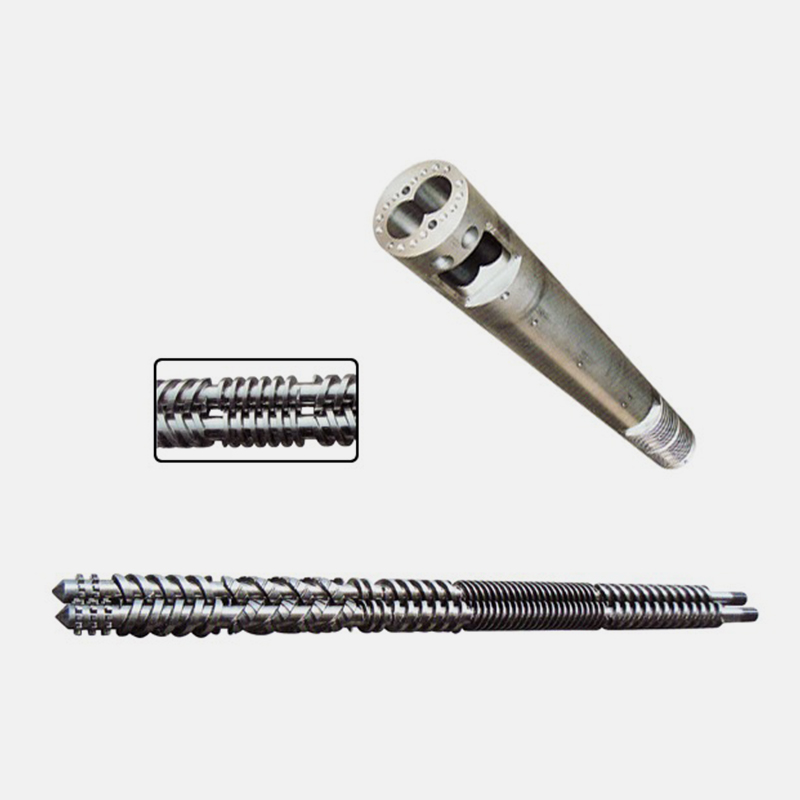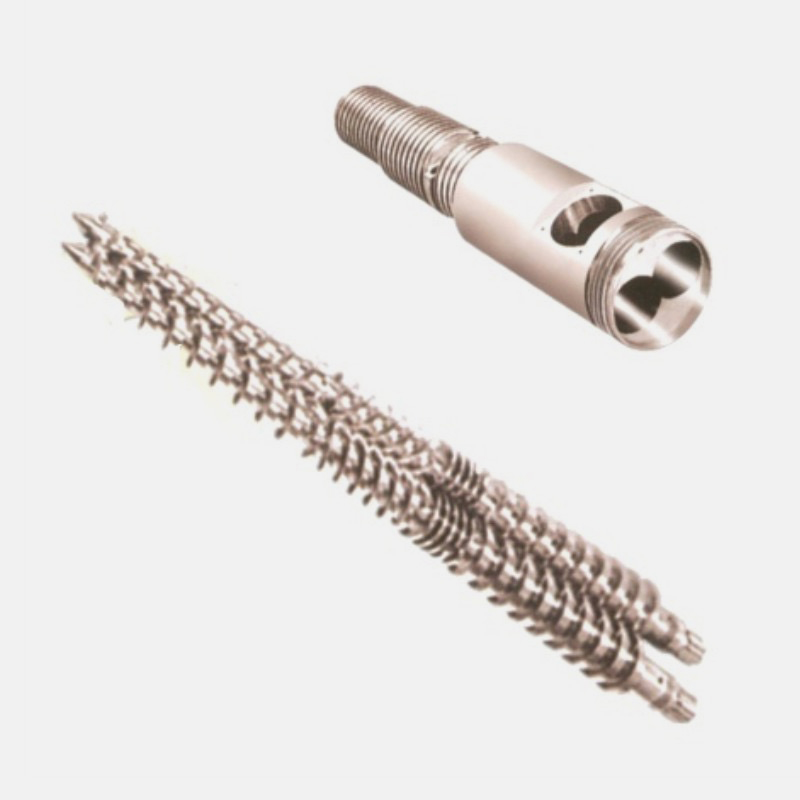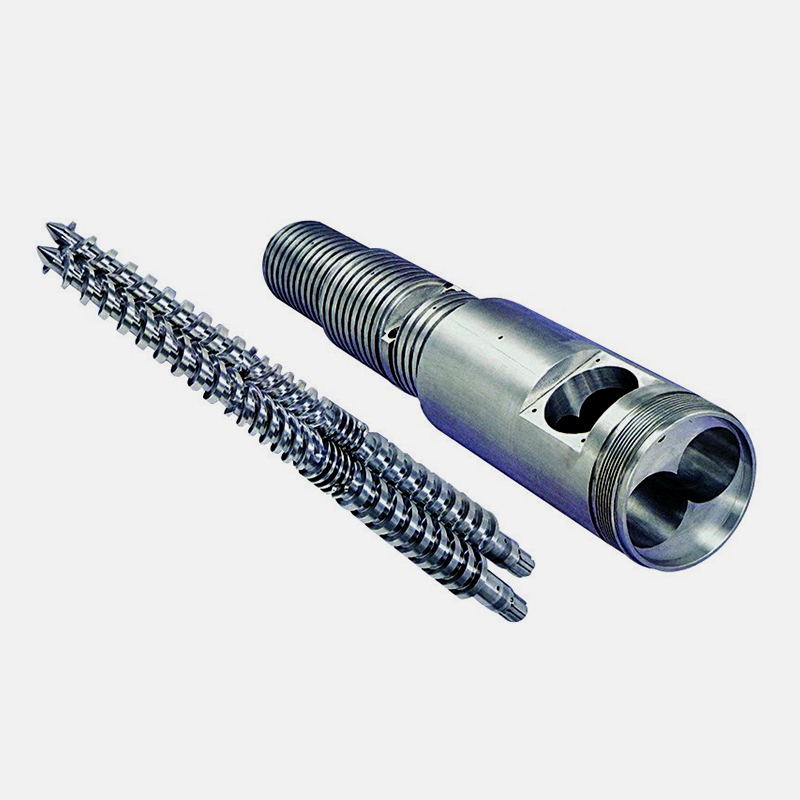According to the direction of rotation of the twin-screw, it can be divided into two types: the same direction and the opposite direction. Co-rotating screw barrels mean that the two screws rotate in the same direction when they work, and counter-rotating screw barrels mean that the two screws rotate in opposite directions when they work.
According to whether the axis lines of the twin-screw are parallel or not, it can be divided into two types of screw barrels: the axis lines are parallel and the axis lines intersect. The parallel twin-screw barrels are those whose axes are parallel, and the conical twin-screw barrels whose axes intersect.
Twin-screw barrels are also divided into meshing and non-meshing.
Similarities between parallel and conical twin-screw barrels:
They all have a conveying mechanism for forcing plastics forward, good mixing and plasticizing capabilities and dehydration capabilities, and basically the same adaptability to materials and plastic product molding processes.
Differences between parallel and conical twin-screw barrels:
1. Diameter: The diameter of the parallel twin-screw is the same, and the diameter of the small end of the conical twin-screw is different from the diameter of the large end;
2. Concentric distance: the center distance of the flat twin-screw is the same, the two axes of the conical twin-screw form an angle, and the size of the center distance changes along the axis;
3. Length-to-diameter ratio: Parallel twin-screw (L/D) refers to the ratio of the effective part length of the screw to the outer circle of the screw, and conical twin-screw (L/D) refers to the ratio of the effective part length of the screw to the diameter of the large end and the small The ratio of the average end diameters.
From the above points, we can clearly see that the most significant difference between the parallel and conical twin-screw barrels is the different geometry of the screw barrels, which leads to many differences in structure and performance. Although the two have different characteristics, but have their own advantages.
Parallel twin-screw barrels are limited by the small distance between the centers of the two screws. In the transmission gearbox, there is very limited space for the radial bearings and thrust bearings supporting the two output shafts and the related transmission gears. , but it also cannot solve the reality that the bearing capacity of the bearing, the modulus of the gear, the diameter is small, and the diameter of the tail of the two screws is small, resulting in the result of poor torque resistance. Small output torque and poor load resistance are the most obvious defects of parallel twin-screw barrels. However, the plasticity of the aspect ratio is the advantage of the parallel twin-screw. It can increase and decrease the aspect ratio according to the difference in molding conditions to meet the requirements of plastic processing technology, and can expand the scope of application of the parallel twin-screw, but this point is conical. Twin-screw barrel is difficult to do.
Conical twin-screw barrel Two conical screws are arranged horizontally, and the two axes are installed into the barrel at an angle. The center distance between the two axes gradually increases from the small end to the large end, so that the two output shafts of the transmission gearbox have a relatively large gap. Large center distance, the gears and gear shafts in these transmission systems, as well as the radial bearings and thrust bearings supporting these gear shafts, leave a large installation space. It can install larger radial bearings and thrust bearings. Each transmission The shaft has a shaft diameter sufficient to meet the transmission torque, so large working torque and large load-bearing capacity are major features of the conical twin-screw barrel. This parallel twin-screw barrel is incomparable. Back-stop bearing of twin-screw barrel When the twin-screw barrel is working, the melt will generate a very large pressure (head pressure) at the head of the screw. The pressure is usually around 14MPA, sometimes even as high as 30MPA. The screw rod forms a strong axial thrust, and it is the function of the anti-retraction bearing to withstand the thrust.
Parallel twin-screw barrels are limited by the small distance between the centers of the two screws. The bearing capacity of the anti-retraction bearing is related to its diameter. The larger the diameter, the greater the load-carrying capacity. Obviously, it is impossible to use a large-diameter anti-retraction bearing. In this contradictory situation, several small-diameter anti-backlash bearings are usually used in series to bear a strong axial force. The core problem of using this method is that each thrust bearing must bear the same load. Some bearings are damaged early due to overload, and the load it should bear is added to other bearings to overload them. The consequences of this continuous damage are very serious. It can be seen from this that the structure of the parallel twin-screw and barrel transmission system is more complicated. Compared with the structure of the conical twin-screw and barrel transmission system, the manufacturing cost of the gearbox is high and the maintenance is more complicated.
Conical twin screw barrel for extrusion machinery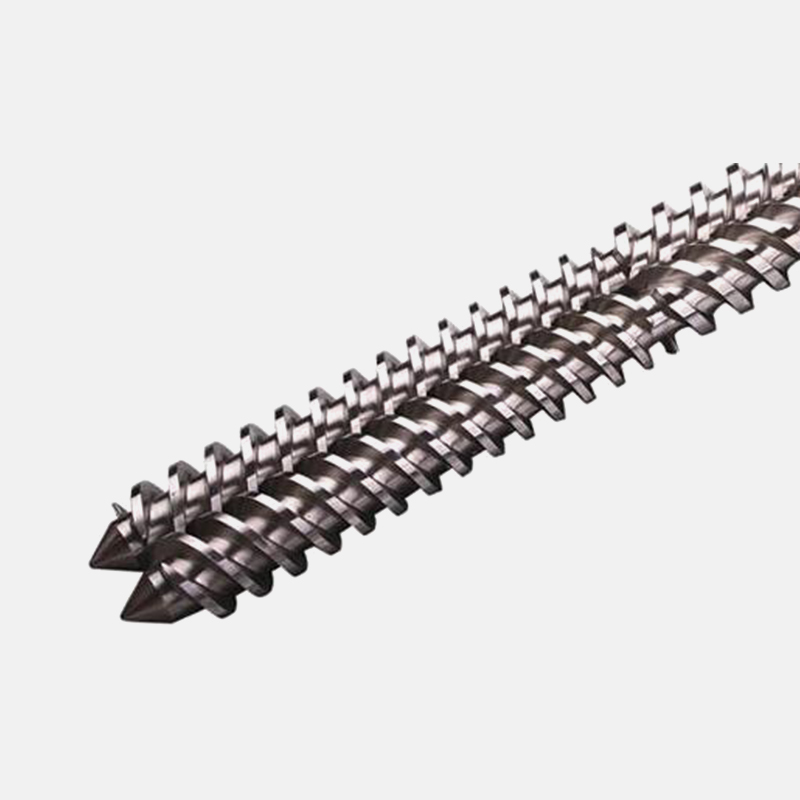
Treatment Process
- Quenched and tempered
- Nitriding
- Hard chrome plating
- Spray bimetallic layer
- High frequency quenching
- Centrifugal casting bimetallic inside
- Nature hardening
Specifications: Φ20mm- Φ300mm
Aspect ratio: L / D = 15-65
Materials and Technology:
1. 38CrMoALA nitriding treatment
Nitriding depth: 0.5-0.8mm, nitriding hardness: HV≥920
2. 42CrMo Plating: induction hardening + plating / double metal plating PTA +
Chrome hardness: ≥HV800, thickness 0.03-0.05mm, roughness Ra0.2um
3. SKD61 quenching, vacuum quenching overall hardening treatment
Hardness index: HRC> 55-58, straightness 0.015mm / m, roughness Ra0.4um
4. 9Cr18Mov vacuum hardening, CNC circular grinding
Hardness index: HRC> 50-55, straightness 0.015mm / m, roughness Ra0.4um
5. hard chromium plating Specifications:
Chrome plating thickness: 0.05-0.10mm, chrome layer hardness: HV≥960

 English
English 简体中文
简体中文 España
España عربى
عربى

